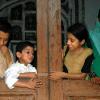
Anne Goujon will participate in a webinar discussion on the future population of Pakistan organized by the Population Research Center (PRC) at the Institute of Business Administration (IBA) Karachi.
Understanding the future trajectory and structure of the population is crucial for effective policy planning, prompting numerous institutions to formulate population projections to serve this purpose. At the global level, the population projections by the United Nations are the most used ones. In 2013, the International Institute for Applied Systems Analysis (IIASA) within the Wittgenstein Centre for Demography and Human Capital introduced a new set of global population projections that not only look at the future population by age and sex but also incorporate the human capital component proxied by levels of educational attainment. These projections that follow the Shared Socioeconomic Pathways (SSPs) scenarios have found widespread use within the environmental and climate change community, among others. They were updated in 2018 and 2023.
POPJUS Program Director at IIASA, Anne Goujon will present the latest update at the global level but narrow down on the country case of Pakistan, where the fertility transition has been going slower than expected, leading to an upward update to the population in 2050 and 2100, compared to previous versions of the projections. According to SSP2, the middle-of-the-road scenario, the population in Pakistan would reach 370 million in 2050 and 491 million in 2100. The different scenarios show different results with different implications for the age and education structure.
Dr. Goujon’s scientific interests lie in the macro-level analysis and projections of background characteristics of the population acquired during childhood that rarely change once an individual has been emancipated from parental control, such as education and religion. She has applied the methodology of multi-state population projections to many settings, using scenarios to show the impact of the long-term dynamics of demographic change on these characteristics, and conversely, the impact of heterogeneous demographic behaviors of these groups on the overall population.
Related Publication
K.C., S., Dhakad, M., Potančoková, M. , Adhikari, S., Yildiz, D. , Mamolo, M., Sobotka, T., Zeman, K., Abel, G. , Lutz, W. , & Goujon, A. (2024). Updating the Shared Socioeconomic Pathways (SSPs) Global Population and Human Capital Projections. IIASA Working Paper. Laxenburg, Austria: WP-24-003
Upcoming Events
Potsdam Institute for Climate Impact Research (PIK) & Online
German IIASA Networking Event: "Systems analysis for a sustainable and peaceful future"
Online and Austrian Academy of Sciences (Doktor-Ignaz-Seipel-Platz 2, Vienna)
Human Agency to Navigate the Anthropocene
Humboldt University of Berlin

